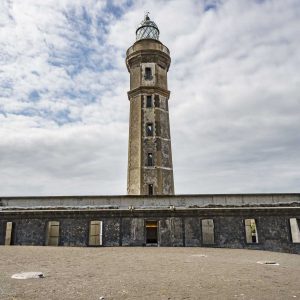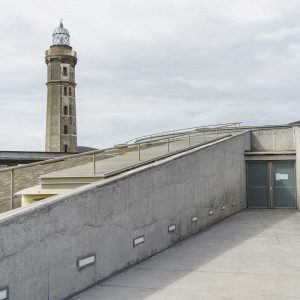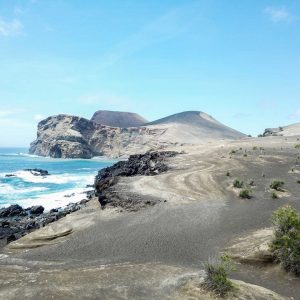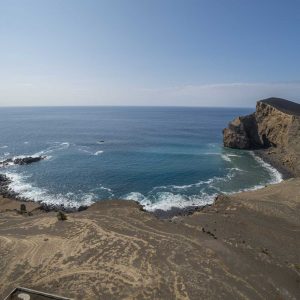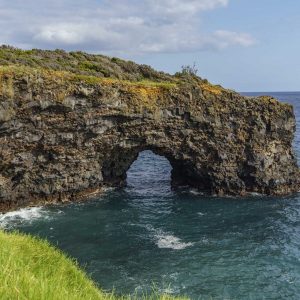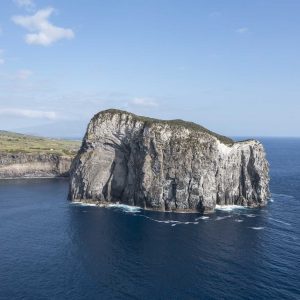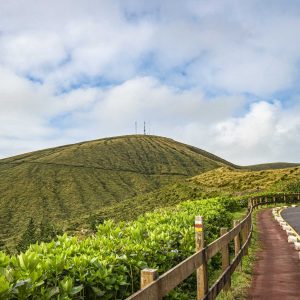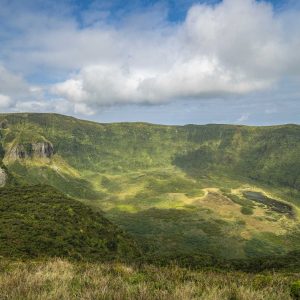Experienciar e compreender a forma audaz e sábia como os açorianos conseguiram, desde o período do povoamento, conviver com a origem vulcanológica das suas ilhas, exige não só deixar-se surpreender pelas magníficas paisagens da ilha do Faial mas também visitar o património edificado, marcado por sucessivos fenómenos vulcânicos e sísmicos que comprovam esta história ímpar, marcada pela resiliência humana face ao poder da natureza.
Começamos por visitar a zona litoral conhecida como Ponta Furada. Esta zona é marcada por arribas com diversos arcos e grutas, formadas pela erosão marinha. Do Miradouro da Lajinha, podemos apreciar uma boa panorâmica desta zona costeira, uma das mais belas da Ilha.
Seguimos até ao Morro de Castelo Branco, um dos mais conhecidos e panorâmicos locais de interesse geológico da ilha do Faial, que, sendo um local tão singular, dá também o nome à freguesia de Castelo Branco. Depois de apreciar a vista do morro, ou percorrer um dos trilhos pedestres até ao domo, talvez possamos aproveitar para provar o famoso Queijo Curado Morro, um geoproduto que se inspirou na morfologia do Morro de Castelo Branco.
O próximo ponto de visita é o imperdível Centro de Interpretação do Vulcão dos Capelinhos, alvo de vários prémios nacionais e internacionais que destacam sobretudo a sua arquitetura perfeitamente adaptada à paisagem particular onde se insere. Neste espaço de carácter informativo, didático e científico, que dispõe de um conjunto de exposições, com especial destaque para a erupção do Vulcão dos Capelinhos e a formação do arquipélago dos Açores, o visitante poderá compreender os principais fenómenos vulcânicos e erupções históricas no Arquipélago e no mundo.
Depois do almoço, seguimos até ao Vulcão da Caldeira, um grande edifício vulcânico que ocupa a maior parte da área da Ilha. Formou-se por numerosas erupções, ao longo dos últimos 400 mil anos, e apresenta uma grande depressão no topo, com cerca de 2 km de diâmetro – a Caldeira. No Cabeço Gordo, no bordo sul da Caldeira, de onde é possível desfrutar de uma paisagem ímpar do Faial e ilhas vizinhas, atinge-se a maior altitude da Ilha (com 1043 metros).
Embora a erupção do Vulcão dos Capelinhos possa ser considerada uma das erupções históricas mais destrutivas e emblemáticas do Faial, outros fenómenos vulcânicos e tectónicos marcaram a história, as vivências e, claro, o património edificado da Estas catástrofes foram um testemunho eloquente das forças da natureza e da dinâmica do planeta Terra, nesta zona do oceano Atlântico, em plena junção tripla de placas tectónicas.
Terminamos com a visita ao Morro da Espalamaca, um dos geossítios imperdíveis da Ilha, para uma panorâmica de fim de tarde sobre a baía da Horta.

